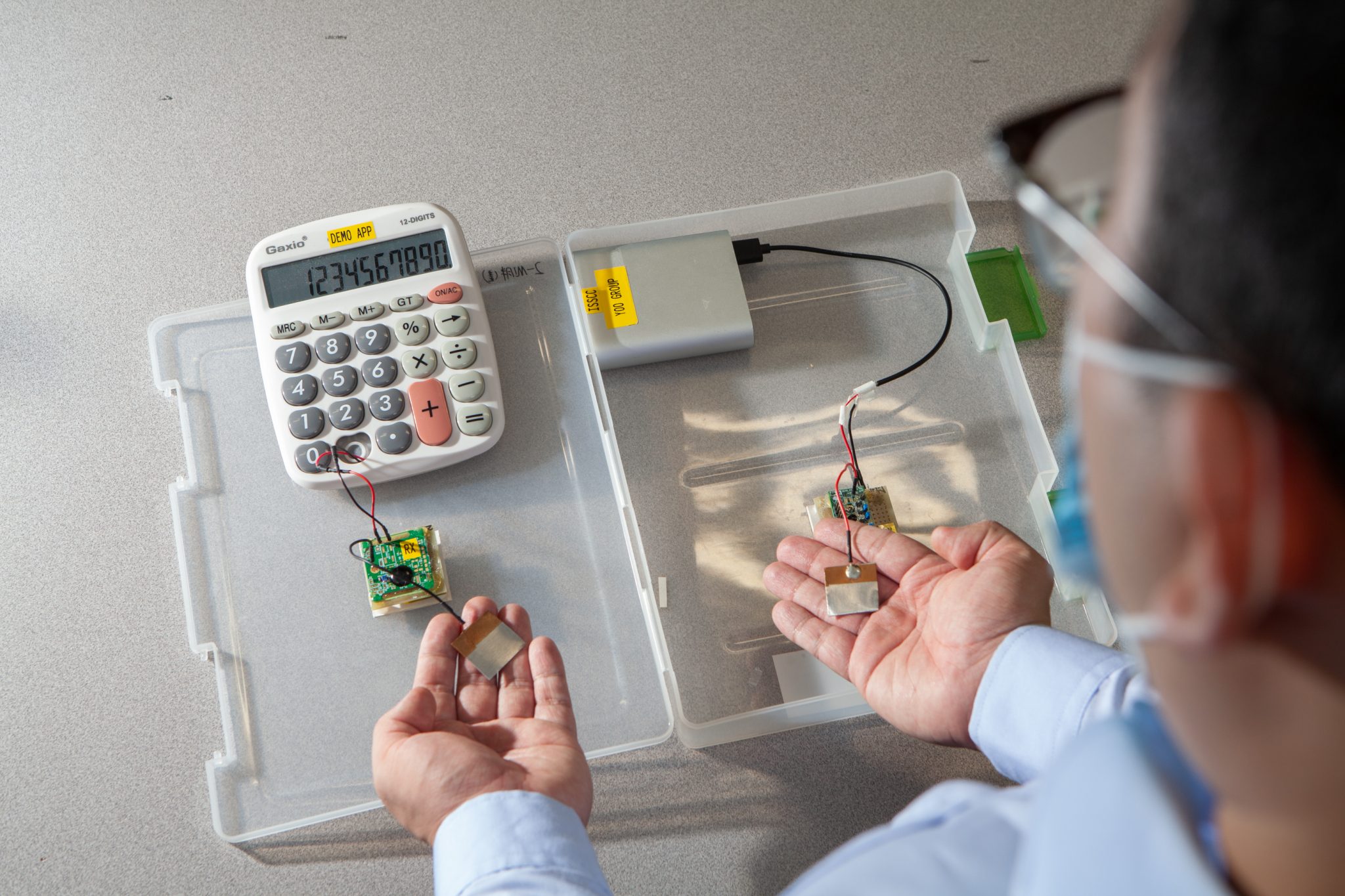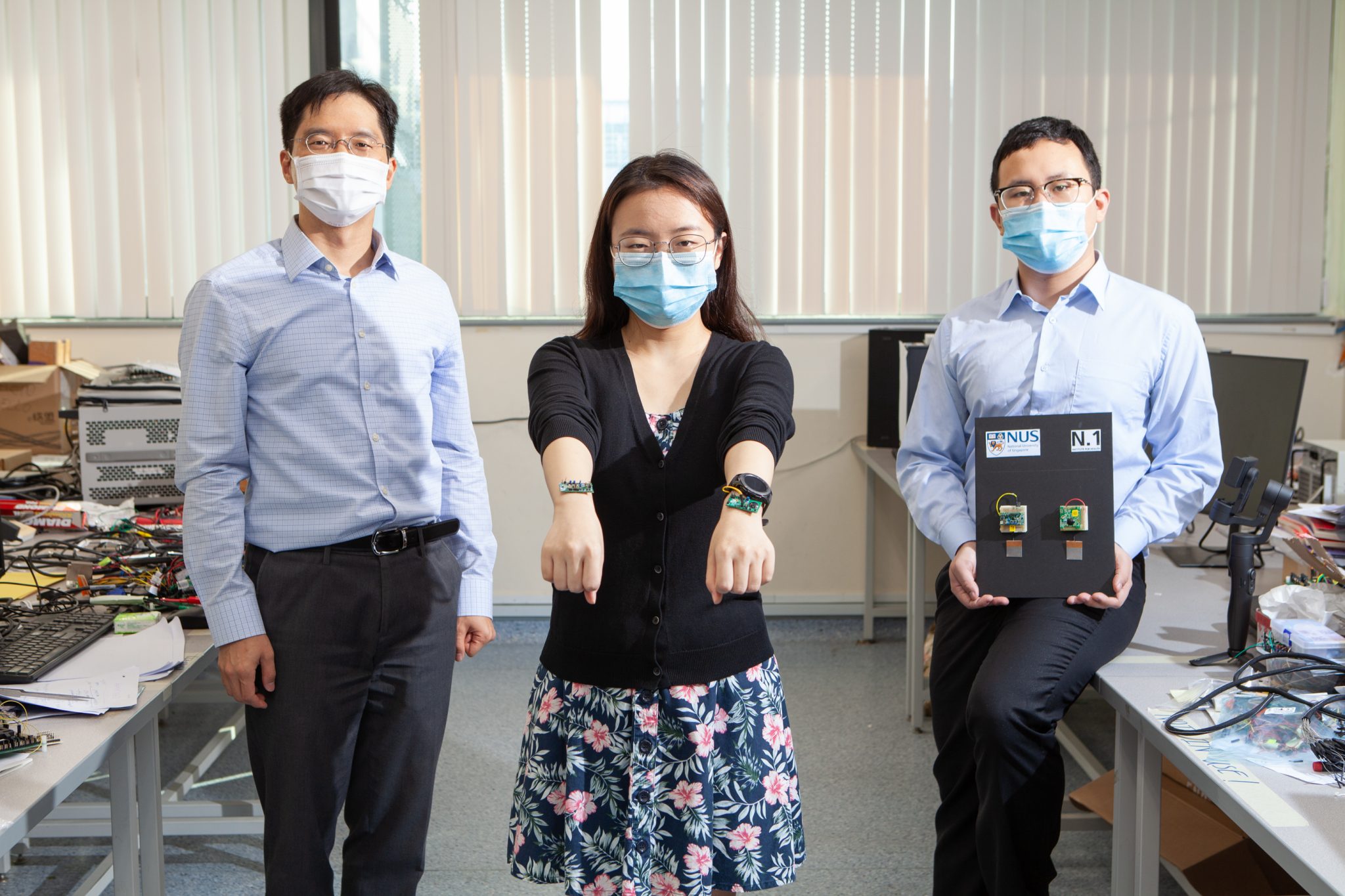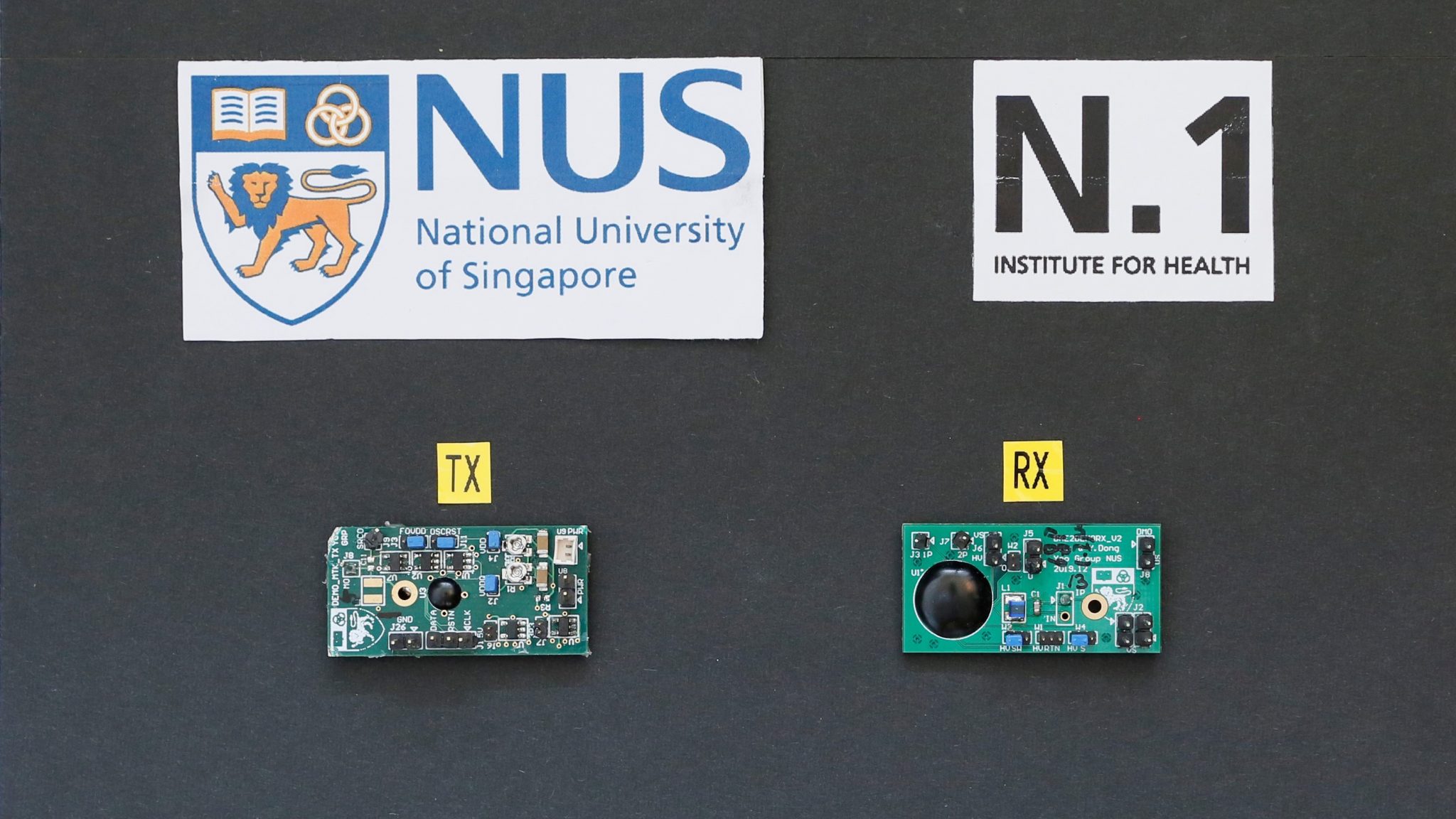
An innovative power transmission and energy harvesting system that uses the human body to transmit power to wearable devices has been developed by NUS engineers.
The breakthrough could pave the way to smaller, cheaper, battery-free wearable tech.
The system uses a single power source such as a mobile phone to wirelessly power other wearable devices on a user's body, using the human body itself as a medium for power transmission.
The team's novel system also has an added advantage - it can harvest unused energy from electromagnetic waves given off by devices such as laptops.
The research team behind the process is led by Associate Professor Jerald Yoo from the NUS Department of Electrical and Computer Engineeringand the N.1 Institute for Health.
Their work was recently published in the journal Nature Electronics.

Their system is designed around a transmitter and receiver system each containing a chip that is used as a springboard to extend power coverage over the user's entire body.
A user just needs to place the transmitter on a single power source while multiple receivers can be placed anywhere on the person's body. The system then harnesses energy from the source via a process called body-coupled power transmission.
The team deliberately avoided using an explicit closed loop circuit for the system. As a result the current that flows through the wearer's body is two or three orders of magnitude lower than the safety limit - in other words, about the same as touching the positive end of a standard AA battery.
The team's experiments showed that their system allows a single fully charged power source to power up to 10 wearable devices on the body for a duration of over 10 hours.
Smaller devices

Batteries are among the bulkiest and most expensive elements of most current wearable devices.
The researchers say that removing batteries and introducing a reliable wireless power source instead could enable manufactures to make much smaller devices.
In addition to powering devices such as earphones and smartwatches, the development could also support new generations of battery-free healthcare technology, such as wearable injectors, electrocardiogram (ECG) monitoring patches, hearing aids, and more.





